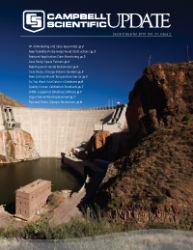 Did you watch the Winter Olympics? I sure did. The competition was amazing! Races were determined by hundredths, even thousandths of a second. Those measurements needed to be accurate and precise and had to be reported with enough resolution to determine the winner.
Did you watch the Winter Olympics? I sure did. The competition was amazing! Races were determined by hundredths, even thousandths of a second. Those measurements needed to be accurate and precise and had to be reported with enough resolution to determine the winner.
At Campbell Scientific, we know a lot about making measurements. When making measurements and reporting data it is important to understand the following factors:
- What you are measuring
- The specifications of the tools you are using (sensors and dataloggers)
- The project needs
Campbell Scientific dataloggers allow you to specify different resolutions for your data when you program the datalogger. In CRBasic, you have the output option of FP2 (low resolution) or IEEE4 (high resolution), among others. FP2 is adequate for most stored data. Some measurements, such as barometric pressure in millibars, need to be stored in IEEE4. For our Edlog dataloggers, instruction P78 specifies low or high resolution. See the box below for programming examples.
Some questions to ask yourself when deciding on the resolution of your output:
|
Setting Resolution in Setting Resolution in |
- Does this make sense in the environment being measured?
- Do the sensor's specifications warrant this level of resolution?
- Is the datalogger programmed to respond to this level of resolution?
- How much resolution is needed to do the job?
The objective of a data acquisition system should be to produce data with high accuracy, high precision, and the appropriate resolution for the given application. Luge races are timed to the thousandth of a second, super-G to the hundredth, and biathlon to the tenth. Which race are you in?
Go for the gold!
![]()

